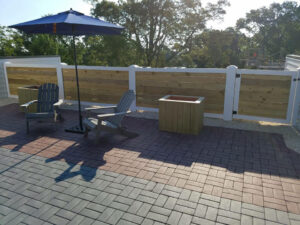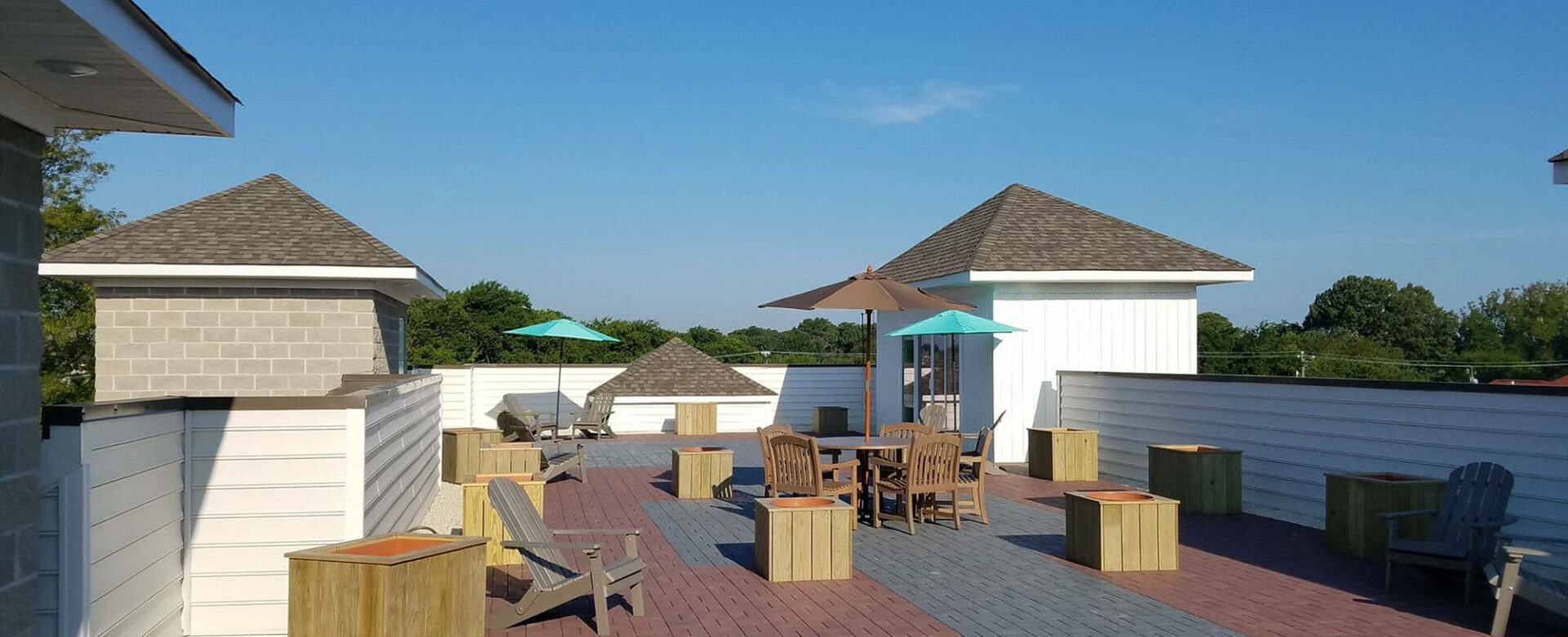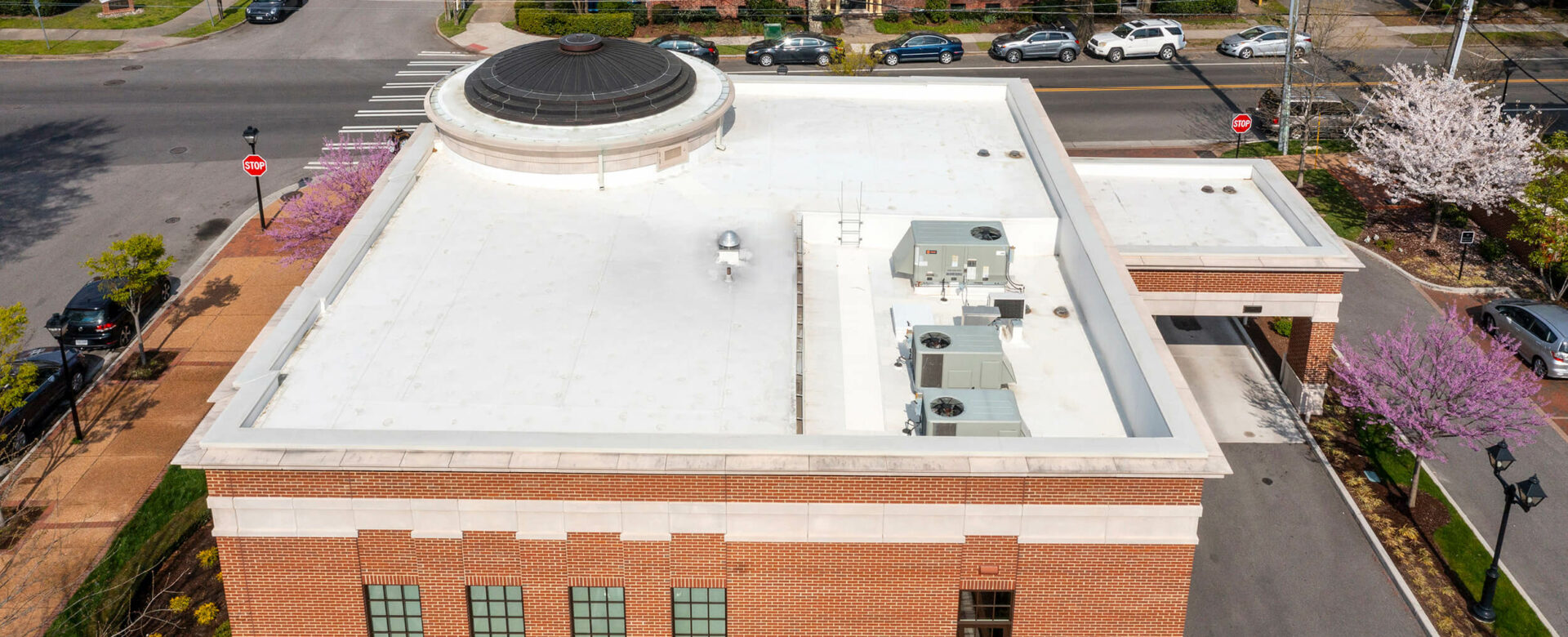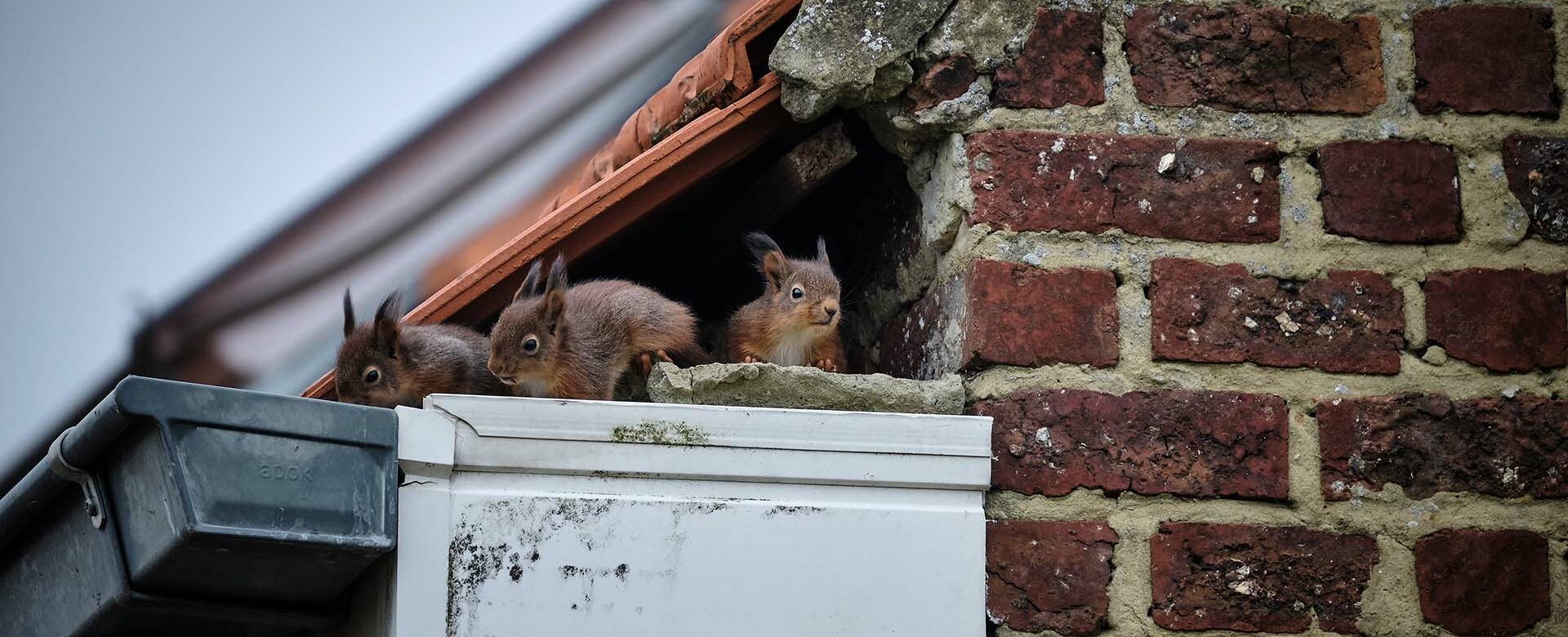Flat roofs often go completely unnoticed when in reality they can be excellent usable space.
In fact, walkable roofing surfaces allow flat roofs and decks to become not just usable, but more energy efficient and sustainable in many cases.
 What is a Walkable Roof?
What is a Walkable Roof?
A walkable roof surface must be flat, strong enough to bear the appropriate amount of weight, and must meet the local building codes for safety regarding railings or walls around the exterior of the walkable space. In many cases, industrial buildings have flat roofs that are walkable, but are often just used for maintenance and HVAC access needs. In residential homes, walkable roof surfaces may be porches or balconies as well as flat rooftops. Locally around the Virginia Beach area we also see cupolas, widows’ walks, crows nests, sun decks and more.
What types of materials work for walkable roofs?
For high traffic roofs, composite roofing pavers are a durable and attractive option. Roofing pavers are generally made of rubber, and in many cases they are made almost entirely from recycled materials. This makes them an ecologically friendly option. Their lifespan also makes them a sustainable option, as they can last up to 50 years, further reducing waste.
How do rubber pavers work?
If you’re interested in creating a walkable roof with rubber pavers, it’s critical to use a roofing contractor experienced in this material. They will be able to talk to you about whether or not the roof surface in question is indeed up to code and weight bearing. They will also know how best to lay the foundation for these pavers so that proper drainage is achieved. Generally, a roof consists of wood sheathing which is then covered by a thermoplastic polyolefin (TPO) membrane roofing material, then a roof drain mat and then the pavers are placed on top.
How are rubber pavers eco-friendly?
The TPO material used as the base of most walkable roofs is usually white, which reflects light and heat, making the roofing structure highly efficient. On top of that, the rubber pavers are only 35% the weight of regular concrete pavers, and our brand of choice, Firestone Sky Pavers, are made of 95% recycled tires. These pavers also come in five different colors to match your needs and aesthetic and come with a 20 year warranty. For many businesses and homeowners, walkable roof surfaces with well draining roof pavers are an excellent place to create a rooftop garden. With full sunlight, plants can thrive in this scenario without the concern of weeds or using precious yard space. Not to mention the additional outdoor living space a walkable roof can create.
 Can rubber pavers be used for decks and balconies?
Can rubber pavers be used for decks and balconies?
Many of the installations we do with rubber roofing pavers are for second floor balconies and decks. This material is a great option for these areas as they are lighter than other material options such as concrete and are more durable than wood decking. They also reflect heat and are comfortable to walk on. Thanks to the color variations they also look attractive enough to be used in spaces that are directly attached to the exterior of a home.
Who should install walkable roof surfaces?
As with all roofing jobs, walkable rubber roofing pavers should be installed by a qualified and experienced licensed roofing contractor. Do the research to find a company who has experience with this material as its implementation and installation are unique. At Andrews Roofing, we have experience with these specific roofing materials, especially for oceanfront homes and homes looking to take advantage of the beautiful water views in the Hampton Roads area. If you’ve been thinking about making the most of your flat roofing or decking surface, please give us a call. We’d be happy to talk to you more about the feasibility and benefits of these roofing materials.





